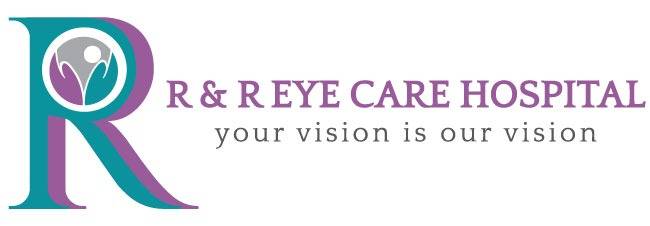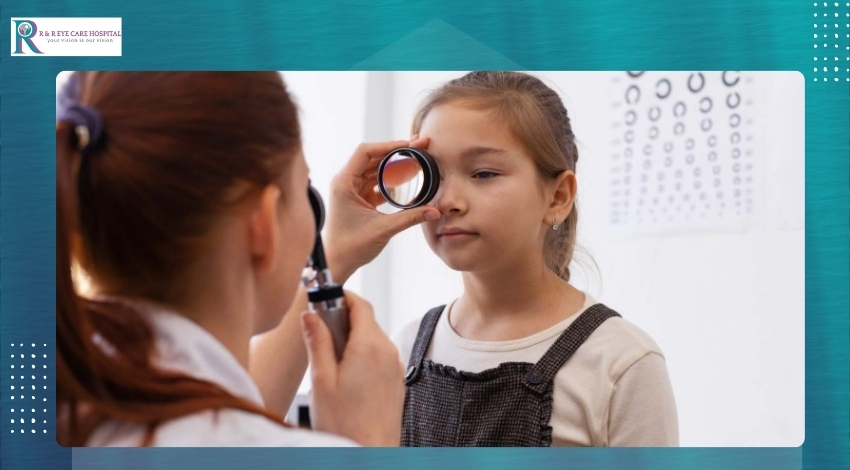Your child’s vision is crucial for their development, learning, and overall quality of life. As they grow, their eyes undergo significant changes, making it essential to prioritize pediatric eye care from an early age. Proper vision care not only helps detect and address potential issues early but also ensures that your child reaches their full potential in academics and extracurricular activities.
In this blog, we’ll explore common vision problems in children, early warning signs, and practical tips to protect and maintain your child’s eye health.
Common Vision Problems in Children
Children may not always recognize or communicate vision issues, making it vital for parents to be proactive in monitoring their eye health. Here are some common vision problems in children:
- Refractive Errors:
- Myopia (Nearsightedness): Difficulty seeing distant objects clearly.
- Hyperopia (Farsightedness): Trouble focusing on close objects.
- Astigmatism: Blurred vision caused by an irregularly shaped cornea.
- Amblyopia (Lazy Eye):
- A condition where one eye has reduced vision because it hasn’t developed properly. Early treatment is crucial to prevent permanent vision loss.
- Strabismus (Crossed Eyes):
- Misalignment of the eyes, which can affect depth perception and lead to amblyopia if left untreated.
- Convergence Insufficiency:
- Difficulty focusing on nearby objects, often causing eye strain or headaches during reading.
- Color Vision Deficiency (Color Blindness):
- Difficulty distinguishing between certain colors, which can impact learning and everyday activities.
Regular eye exams are essential to detect and address these issues early, ensuring proper vision development.
Signs Your Child May Have Vision Problems
While children may not always complain about their vision, certain behaviors can indicate potential issues. Keep an eye out for these warning signs:
- Frequent squinting or tilting of the head.
- Covering one eye to focus on objects.
- Complaints of headaches or eye strain.
- Difficulty reading or sitting too close to the TV.
- Poor performance in school or sports due to trouble seeing.
- Excessive blinking, tearing, or rubbing of the eyes.
If you notice any of these signs, schedule an appointment with an eye specialist immediately.
Tips to Protect Your Child’s Vision
Protecting your child’s eye health involves a combination of preventative measures, healthy habits, and regular checkups. Here are some practical tips:
1. Schedule Regular Eye Exams
Comprehensive eye exams are the best way to monitor your child’s vision and detect potential problems early. The recommended schedule is:
- First eye exam at six months old.
- Follow-up exam at age three.
- Annual exams starting at school age.
2. Encourage Balanced Screen Time
Excessive screen time can lead to digital eye strain, a growing concern among children. To minimize its impact:
- Follow the 20-20-20 rule: Encourage your child to take a 20-second break every 20 minutes by looking at something 20 feet away.
- Limit screen use to age-appropriate durations.
- Ensure proper lighting and screen distance (at least 18–24 inches away).
3. Promote a Healthy Diet
Good nutrition supports eye health and overall development. Include foods rich in:
- Vitamin A: Found in carrots, sweet potatoes, and spinach, it helps maintain good vision.
- Omega-3 Fatty Acids: Found in fish, walnuts, and flaxseeds, they prevent dryness and support retina health.
- Vitamin C and E: Found in citrus fruits, nuts, and seeds, they protect against eye damage.
4. Ensure Proper Lighting
When reading, studying, or playing, ensure your child has adequate lighting to reduce eye strain. Encourage them to sit upright and maintain an appropriate distance from their books or screens.
5. Protect Eyes During Outdoor Play
Outdoor activities are great for vision development but come with potential risks. To protect your child’s eyes:
- Encourage the use of UV-blocking sunglasses to shield their eyes from harmful sunlight.
- Use protective goggles during sports or activities involving sharp objects or small projectiles.
6. Address Allergies and Infections Promptly
Children are prone to eye infections and allergies, which can cause redness, itching, or watering. Teach them to avoid touching their eyes with dirty hands and ensure they practice proper hygiene.
Why Pediatric Eye Care Matters
Early detection and intervention are critical for addressing vision problems in children. Poor vision can impact a child’s ability to learn, play, and interact socially, potentially leading to developmental delays. Regular eye exams not only identify issues but also provide opportunities to treat and correct them, giving your child the best chance for success.
Why Choose R & R Eye Care Hospital for Pediatric Eye Care?
At R & R Eye Care Hospital, we understand the unique needs of children’s vision care. Our experienced pediatric ophthalmologists provide comprehensive eye exams and personalized treatment plans in a child-friendly environment.
Our Services Include:
- Vision screening and corrective lenses.
- Treatment for conditions like lazy eye and squint.
- Myopia control programs.
- Eye safety tips and education for parents.
With locations in Matunga East and Dadar West, R & R Eye Care Hospital is committed to safeguarding your child’s vision with care and expertise.
Conclusion
Protecting your child’s vision is a lifelong commitment that starts with regular eye exams and healthy habits. By recognizing the signs of vision problems early and taking proactive steps, you can help your child enjoy clear, healthy vision for years to come.
If you’re concerned about your child’s eye health or need to schedule their first eye exam, contact R & R Eye Care Hospital today. Together, let’s ensure your child has the vision they need to succeed.




Leave A Comment